An Overview of Key Technologies for Intelligent Access Toward 6G Full-domain Convergence
-
摘要: 针对空天地一体化接入网络,该文在总结相关研究的基础上,阐述了未来空天地一体化接入架构的关键技术,分析了空口技术、多址技术、干扰分析、计算技术和人工智能(AI)技术等几个重点方向的研究进展,提出了多种接入形式并存的灵活性网络架构。针对6G全域融合网络接入的重点研究问题,结合用户的服务质量需求,构建了一体化AI赋能架构,提出了大规模混合多址接入及弹性资源适配策略。基于网络架构立体化、网络协同传输、一体化网络资源管理、未来空天地接入技术以及网络协同计算等未来重点研究方向进行了讨论和展望。
-
关键词:
- 6G /
- 网络架构 /
- 接入技术 /
- 空天地一体化接入网络 /
- 空口技术
Abstract: Considering the integrated air-to-ground access network, based on summarizing the relevant research, the key technologies of future air-to-ground integrated access architecture are elaborated, and the research progress in several key directions, such as air-port technology, multiple-access technology, interference analysis, computation technology, and Artificial Intelligence (AI) technology are analyzed, and a flexible network architecture with the coexistence of multiple access forms is proposed. Considering the key research problems of the access architecture in the current air-to-ground integrated network, an integrated AI-enabled architecture is constructed by combining the user’s quality of service demand, and the large-scale hybrid multiple access and flexible resource adaptation strategy is proposed. Based on the future key research directions of network architecture stereoscopic, network cooperative transmission, integrated network resource management, future air-to-ground access technology, and network cooperative computation are discussed and outlooked. -
表 1 空口可变参数集的主要参数
主要参数 参考范围 备注 信道带宽 180 kHz~1 GHz 适应物联网、带宽传输等多类型业务需求 调制波形 循环前缀-正交频分复用(Cyclic Prefix-Orthogonal Frequency Division Multiplexing, CP-OFDM) 单载波波形/OFDM 编码方式 Polar码、卷积码等 可支持其他类型编码 子载波间隔 15 kHz, 60 kHz等 提供多种子载波间隔 多址接入方式 正交频分多址接入(Orthogonal Frequency Division Multiple Access, OFDMA),图样分割非正交多址接入(Pattern Division Multiple Access, PDMA)等 根据不同场景选取不同多址接入方式 多波束协同传输 支持多场景波束联合传输 发挥多波束联合分集增益,提高系统容量 随机接入方式 随遇、极简接入 根据业务需求、网络状态选择接入 切换方式 极智切换 支持基于位置、终端需求的切换方式 表 2 AI技术研究现状
-
[1] 钱志鸿, 肖琳, 王雪. 面向未来移动网络密集连接的关键技术综述[J]. 通信学报, 2021, 42(4): 22–43. doi: 10.11959/j.issn.1000-436x.2021094.QIAN Zhihong, XIAO Lin, and WANG Xue. Review on strategic technology of dense connection for the future mobile network[J]. Journal on Communications, 2021, 42(4): 22–43. doi: 10.11959/j.issn.1000-436x.2021094. [2] DAO N N, PHAM Q V, TU N H, et al. Survey on aerial radio access networks: Toward a comprehensive 6G access infrastructure[J]. IEEE Communications Surveys & Tutorials, 2021, 23(2): 1193–1225. doi: 10.1109/COMST.2021.3059644. [3] ITU. Statistics[EB/OL].https://www.itu.int/en/ITU-D/Statistics/Pages/stat/default.aspx, 2022. [4] 周天清, 胡海琴, 曾新亮. NOMA-MEC系统中基于改进遗传算法的协作式计算卸载与资源管理[J]. 电子与信息学报, 2022, 44(9): 3014–3023. doi: 10.11999/JEIT220306.ZHOU Tianqing, HU Haiqin, and ZENG Xinliang. Cooperative computation offloading and resource management based on improved genetic algorithm in NOMA-MEC systems[J]. Journal of Electronics & Information Technology, 2022, 44(9): 3014–3023. doi: 10.11999/JEIT220306. [5] 吴巍. 天地一体化信息网络发展综述[J]. 天地一体化信息网络, 2020, 1(1): 1–16. doi: 10.11959/j.issn.2096-8930.20200101.WU Wei. Survey on the development of space-integrated-ground information network[J]. Space-Integrated-Ground Information Networks, 2020, 1(1): 1–16. doi: 10.11959/j.issn.2096-8930.20200101. [6] LIU Jiajia, SHI Yongpeng, FADLULLAH Z M, et al. Space-air-ground integrated network: A survey[J]. IEEE Communications Surveys & Tutorials, 2018, 20(4): 2714–2741. doi: 10.1109/COMST.2018.2841996. [7] 袁祖霞, 程铭, 郭克锋. 基于上行非正交多址接入技术的星空地融合网络性能分析[J]. 电子与信息学报, 2022, 44(8): 2666–2676. doi: 10.11999/JEIT220379.YUAN Zuxia, CHENG Ming, and GUO Kefeng. Performance analysis of satellite-aerial-terrestrial integrated network based on uplink NOMA technology[J]. Journal of Electronics & Information Technology, 2022, 44(8): 2666–2676. doi: 10.11999/JEIT220379. [8] GUO Yan, LI Qing, LI Yuanzhe, et al. Service coordination in the space-air-ground integrated network[J]. IEEE Network, 2021, 35(5): 168–173. doi: 10.1109/MNET.111.2100153. [9] ITU. ITU-T NET2030 SUB. G1: 2020 Representative use cases and key network requirements for Network 2030[S]. Geneva: ITU, 2020. [10] 张平, 张建华, 戚琦, 等. Ubiquitous-X: 构建未来6G网络[J]. 中国科学:信息科学, 2020, 50(6): 913–930. doi: 10.1360/SSI-2020-0068.ZHANG Ping, ZHANG Jianhua, QI Qi, et al. Ubiquitous-X: Constructing the future 6G networks[J]. Scientia Sinica Informationis, 2020, 50(6): 913–930. doi: 10.1360/SSI-2020-0068. [11] 中国移动通信有限公司研究院. 2030+技术趋势白皮书[R]. 2020.China Mobile Communication Co., Ltd. 2030+ Technology trends white paper[R]. 2020. [12] 3GPP. Physical layer procedures for data V16.6. 0 (release 16)[R]. 3GPP TS 38.214, 2021. [13] 3GPP. Solutions for NR to support non-terrestrial networks (NTN) V1.0. 0 (release 16)[R]. 3GPP TR 38.821, 2019. [14] 周卫兵. 卫星网络资源管理与接入技术研究[D]. [硕士论文], 北京邮电大学, 2018.ZHOU Weibing. Research of resource management and access technology based on satellite network[D]. [Master dissertation], Beijing University of Posts and Telecommunications, 2018. [15] 王爱玲, 刘建军, 潘成康, 等. 空天地一体化空口接入协议研究[J]. 移动通信, 2021, 45(5): 53–56. doi: 10.3969/j.issn.1006-1010.2021.05.009.WANG Ailing, LIU Jianjun, PAN Chengkang, et al. Research on air interface access protocol of space-air-ground integrated networks[J]. Mobile Communications, 2021, 45(5): 53–56. doi: 10.3969/j.issn.1006-1010.2021.05.009. [16] 侯利明, 韩波, 缪德山, 等. 基于5G及演进的星地融合空口传输技术[J]. 信息通信技术与政策, 2021, 47(9): 21–29. doi: 10.12267/j.issn.2096-5931.2021.09.004.HOU Liming, HAN Bo, MIAO Deshan, et al. Research of air-interface technologies for 5G based integrated satellite-terrestrial communication[J]. Information and Communications Technology and Policy, 2021, 47(9): 21–29. doi: 10.12267/j.issn.2096-5931.2021.09.004. [17] LI Xiaoyang, ZHU Guangxu, GONG Yi, et al. Wirelessly powered data aggregation for IoT via over-the-air function computation: Beamforming and power control[J]. IEEE Transactions on Wireless Communications, 2019, 18(7): 3437–3452. doi: 10.1109/TWC.2019.2914046. [18] 李晓阳, 周梓钦, 贡毅. 通信感知计算一体化波束赋形设计[J]. 中兴通讯技术, 2022, 28(5): 23–28. doi: 10.12142/ZTETJ.202205006.LI Xiaoyang, ZHOU Ziqin, and GONG Yi. Beamforming design for integrated sensing, communication and computation[J]. ZTE Technology Journal, 2022, 28(5): 23–28. doi: 10.12142/ZTETJ.202205006. [19] SINGYA P K and ALOUINI M S. Performance of UAV-assisted multiuser terrestrial-satellite communication system over mixed FSO/RF channels[J]. IEEE Transactions on Aerospace and Electronic Systems, 2022, 58(2): 781–796. doi: 10.1109/taes.2021.3111787. [20] JIA Ziye, SHENG Min, LI Jiandong, et al. Joint HAP access and LEO satellite backhaul in 6G: Matching game-based approaches[J]. IEEE Journal on Selected Areas in Communications, 2021, 39(4): 1147–1159. doi: 10.1109/JSAC.2020.3018824. [21] HUANG Qingquan, LIN Min, ZHU Weiping, et al. Uplink massive access in mixed RF/FSO satellite-aerial-terrestrial networks[J]. IEEE Transactions on Communications, 2021, 69(4): 2413–2426. doi: 10.1109/TCOMM.2021.3049364. [22] KONG Huaicong, LIN Min, ZHANG Jian, et al. Ergodic sum rate for uplink NOMA transmission in satellite-aerial-ground integrated networks[J]. Chinese Journal of Aeronautics, 2022, 35(9): 58–70. doi: 10.1016/j.cja.2021.10.039. [23] CHUNG K. Correlated superposition coding: Lossless two-user NOMA implementation without SIC under user-fairness[J]. IEEE Wireless Communications Letters, 2021, 10(9): 1999–2003. doi: 10.1109/LWC.2021.3089996. [24] PAN Zhipeng, LIU Wei, LIE Jing, et al. Multi-dimensional space-time block coding aided downlink MIMO-SCMA[J]. IEEE Transactions on Vehicular Technology, 2019, 68(7): 6657–6669. doi: 10.1109/TVT.2019.2915351. [25] NIKOPOUR B, YI E, BAYESTEH H, et al. SCMA for downlink multiple access of 5G wireless networks[C]. 2014 IEEE Global Communications Conference, Austin, USA, 2014: 3940–3945. doi: 10.1109/GLOCOM.2014.7037423. [26] LEI Hongjiang, ZHOU Sha, PARK K H, et al. Outage analysis of millimeter wave RSMA systems[J]. IEEE Transactions on Communications, 2023, 71(3): 1504–1520. doi: 10.1109/TCOMM.2023.3235349. [27] CUI Mingyao and DAI Linglong. Channel estimation for extremely large-scale MIMO: Far-field or near-field?[J]. IEEE Transactions on Communications, 2022, 70(4): 2663–2677. doi: 10.1109/TCOMM.2022.3146400. [28] WEI Xiuhong, DAI Linglong, ZHAO Yajun, et al. Codebook design and beam training for extremely large-scale RIS: Far-field or near-field?[J]. China Communications, 2022, 19(6): 193–204. doi: 10.23919/JCC.2022.06.015. [29] WU Zidong and DAI Linglong. Multiple access for near-field communications: SDMA or LDMA?[J]. IEEE Journal on Selected Areas in Communications, 2023, 41(6): 1918–1935. doi: 10.1109/JSAC.2023.3275616. [30] 3GPP. Release 16 description; summary of rel-16 work items[R]. TR 21.906, 2021. [31] LI Yuanjie, DAI Jincheng, SI Zhongwei, et al. Unsourced multiple access for 6G massive machine type communications[J]. China Communications, 2022, 19(3): 70–87. doi: 10.23919/JCC.2022.03.005. [32] SBIT S, DADI M B and RHAIMI B C. Interference evaluation in cellular networks[J]. Wireless Personal Communications, 2018, 100(4): 1299–1311. doi: 10.1007/s11277-018-5637-1. [33] ZHU Qiao, WANG Xue, QIAN Zhihong, et al. Performance analysis of an intelligent association scheme in ultra-dense networks using matern cluster process[C]. 2019 IEEE/CIC International Conference on Communications in China (ICCC), Changchun, China, 2019: 140–145. doi: 10.1109/ICCChina.2019.8855839. [34] YAO Yao, LI Bin, LI Cheng, et al. Downlink performance analysis of the full-duplex networks with interference cancellation[J]. IEEE Transactions on Communications, 2020, 68(4): 2324–2338. doi: 10.1109/TCOMM.2020.2965536. [35] ALTAY C and KOCA M. Interference mitigation for non-orthogonal multiple access in heterogeneous networks[J]. Wireless Networks, 2023, 29(5): 2189–2202. doi: 10.1007/s11276-023-03274-z. [36] 张更新, 丁晓进, 曲至诚. 天地一体化物联网体系架构及干扰分析研究[J]. 天地一体化信息网络, 2020, 1(2): 22–33. doi: 10.11959/j.issn.2096-8930.20200204.ZHANG Gengxin, DING Xiaojin, and QU Zhicheng. Research on space-based integrated internet of things architecture and interference analysis[J]. Space-Integrated-Ground Information Networks, 2020, 1(2): 22–33. doi: 10.11959/j.issn.2096-8930.20200204. [37] ROIVAINEN A, YLITALO J, KYRÖLÄINEN J, et al. Performance of terrestrial network with the presence of overlay satellite network[C]. 2013 IEEE International Conference on Communications (ICC), Budapest, Hungary, 2013: 5089–5093. doi: 10.1109/ICC.2013.6655389. [38] 贾敏, 孟士尧, 郭庆, 等. 低轨大规模卫星星座系统建模与干扰分析[J]. 太赫兹科学与电子信息学报, 2022, 20(1): 34–39. doi: 10.11805/TKYDA2021151.JIA Min, MENG Shiyao, GUO Qing, et al. Analysis of inter-system interference of large-scale LEO satellite constellation[J]. Journal of Terahertz Science and Electronic Information Technology, 2022, 20(1): 34–39. doi: 10.11805/TKYDA2021151. [39] DENG Ruoqi, DI Boya, ZHANG Hongliang, et al. Ultra-dense LEO satellite constellations: How many LEO satellites do we need?[J]. IEEE Transactions on Wireless Communications, 2021, 20(8): 4843–4857. doi: 10.1109/TWC.2021.3062658. [40] SONG Liang, HU Xing, ZHANG Guanhua, et al. Networking systems of AI: On the convergence of computing and communications[J]. IEEE Internet of Things Journal, 2022, 9(20): 20352–20381. doi: 10.1109/JIOT.2022.3172270. [41] ZHANG Zhenjiang, ZHANG Wenyu, and TSENG F H. Satellite mobile edge computing: Improving QoS of high-speed satellite-terrestrial networks using edge computing techniques[J]. IEEE Network, 2019, 33(1): 70–76. doi: 10.1109/MNET.2018.1800172. [42] QIU CHAO, YAO Haipeng, YU F R, et al. Deep Q-learning aided networking, caching, and computing resources allocation in software-defined satellite-terrestrial networks[J]. IEEE Transactions on Vehicular Technology, 2019, 68(6): 5871–5883. doi: 10.1109/TVT.2019.2907682. [43] LI Bin, FEI Zesong, and ZHANG Yan. UAV communications for 5G and beyond: Recent advances and future trends[J]. IEEE Internet of Things Journal, 2019, 6(2): 2241–2263. doi: 10.1109/JIOT.2018.2887086. [44] XU Fangmin, YANG Fan, ZHAO Chenglin, et al. Deep Reinforcement learning based joint edge resource management in maritime network[J]. China Communications, 2020, 17(5): 211–222. doi: 10.23919/JCC.2020.05.016. [45] JEONG S, SIMEONE O, and KANG J. Mobile edge computing via a UAV-mounted cloudlet: Optimization of bit allocation and path planning[J]. IEEE Transactions on Vehicular Technology, 2018, 67(3): 2049–2063. doi: 10.1109/TVT.2017.2706308. [46] CHENG Nan, LYU Feng, QUAN Wei, et al. Space/aerial-assisted computing offloading for IoT applications: A learning-based approach[J]. IEEE Journal on Selected Areas in Communications, 2019, 37(5): 1117–1129. doi: 10.1109/JSAC.2019.2906789. [47] ZHANG Long, ZHANG Hongliang, GUO Chao, et al. Satellite-aerial integrated computing in disasters: User association and offloading decision[C]. 2020 IEEE International Conference on Communications, Dublin, Ireland, 2020: 554–559. doi: 10.1109/ICC40277.2020.9148796. [48] ALSHAROA S and ALOUINI M A. Improvement of the global connectivity using integrated satellite-airborne-terrestrial networks with resource optimization[J]. IEEE Transactions on Wireless Communications, 2020, 19(8): 5088–5100. doi: 10.1109/TWC.2020.2988917. [49] 崔新雨, 伍杰, 周一青, 等. 空天地一体化融合组网的挑战与关键技术[J]. 西安电子科技大学学报, 2023, 50(1): 1–11. doi: 10.19665/j.issn1001-2400.2023.01.001.CUI Xinyu, WU Jie, ZHOU Yiqing, et al. Challenges of and key technologies for the air-space-ground integrated network[J]. Journal of Xidian University, 2023, 50(1): 1–11. doi: 10.19665/j.issn1001-2400.2023.01.001. [50] 吴晓文, 焦侦丰, 凌翔, 等. 面向6G的卫星通信网络架构展望[J]. 电信科学, 2021, 37(7): 1–14. doi: 10.11959/j.issn.1000-0801.2021147.WU Xiaowen, JIAO Zhenfeng, LING Xiang, et al. Outlook on satellite communications network architecture for 6G[J]. Telecommunications Science, 2021, 37(7): 1–14. doi: 10.11959/j.issn.1000-0801.2021147. [51] XIAO Wenjing, WANG Rui, SONG J, et al. AI-based satellite ground communication system with intelligent antenna pointing[C]. Proceedings of GLOBECOM 2020 - 2020 IEEE Global Communications Conference, Taipei, China, 2021: 1–6. doi: 10.1109/GLOBECOM42002.2020.9322562. [52] ZHANG Sitong. Research on photoelectric effect for artificial satellite communication[C]. Proceedings of 2020 IEEE Intl Conf on Parallel & Distributed Processing with Applications, Big Data & Cloud Computing, Sustainable Computing & Communications, Social Computing & Networking (ISPA/BDCloud/SocialCom/SustainCom), Exeter, UK, 2020: 1465–1469. doi: 10.1109/ISPA-BDCloud-SocialCom-SustainCom51426.2020.00220. [53] YANG Lixuan and ROSSI D. Quality monitoring and assessment of deployed deep learning models for network AIOps[J]. IEEE Network, 2021, 35(6): 84–90. doi: 10.1109/MNET.001.2100227. [54] VÁZQUEZ M Á, HENAREJOS P, PAPPALARDO I, et al. Machine learning for satellite communications operations[J]. IEEE Communications Magazine, 2021, 59(2): 22–27. doi: 10.1109/MCOM.001.2000367. [55] 刘佩璋, 杨博, 刘江春, 等. 基于深度学习的卫星通信抗干扰方法[J]. 电子测试, 2020(1): 86–87. doi: 10.3969/j.issn.1000-8519.2020.01.030.LIU Peizhang, YANG Bo, LIU Jiangchun, et al. Interference awareness method based on deep learning for satellite communication[J]. Electronic Test, 2020(1): 86–87. doi: 10.3969/j.issn.1000-8519.2020.01.030. [56] 孔景娜. 基于强化学习的卫星通信智能抗干扰决策探讨[J]. 无线互联科技, 2021, 18(5): 3–4. doi: 10.3969/j.issn.1672-6944.2021.05.002.KONG Jingna. Research on intelligent anti-interference decision of satellite communication based on reinforcement learning[J]. Wireless Internet Technology, 2021, 18(5): 3–4. doi: 10.3969/j.issn.1672-6944.2021.05.002. [57] 段超凡, 王锐. 基于智能水滴算法的卫星信道资源调度研究[J]. 现代计算机, 2022, 28(7): 75–78,86. doi: 10.3969/j.issn.1007-1423.2022.07.013.DUAN Chaofan and WANG Rui. Satellite channel allocation based on the intelligent water drops algorithm[J]. Modern Computer, 2022, 28(7): 75–78,86. doi: 10.3969/j.issn.1007-1423.2022.07.013. [58] 杨伟超, 杜宇, 文伟, 等. 基于多重分形谱智能分析的卫星信号调制识别研究[J]. 电子学报, 2022, 50(6): 1336–1343. doi: 10.12263/DZXB.20210882.YANG Weichao, DU Yu, WEN Wei, et al. Modulation recognition of satellite communication signal based on intelligent analysis of multi-fractal spectrum[J]. Acta Electronica Sinica, 2022, 50(6): 1336–1343. doi: 10.12263/DZXB.20210882. [59] EBERT J, BAILER W, FLAVIO J, et al. A method for ACM on Q/V-band satellite links based on artificial intelligence[C]. Proceedings of 2020 10th Advanced Satellite Multimedia Systems Conference and the 16th Signal Processing for Space Communications Workshop (ASMS/SPSC), Graz, Austria, 2020: 1–5. doi: 10.1109/ASMS/SPSC48805.2020.9268889. [60] NGUYEN T M. Advanced mathematical modeling of machine learning and artificial intelligent addressing satellite transponder distortions[C]. Proceedings of 2020 IEEE Green Energy and Smart Systems Conference (IGESSC), Long Beach, USA, 2020: 1–6. doi: 10.1109/IGESSC50231.2020.9285157. [61] OLIGERI G, SCIANCALEPORE S, RAPONI S, et al. PAST-AI: Physical-layer authentication of satellite transmitters via deep learning[J]. IEEE Transactions on Information Forensics and Security, 2023, 18: 274–289. doi: 10.1109/TIFS.2022.3219287. [62] STHAPIT S, LAKSHMINARAYANA S, HE Ligang, et al. Reinforcement learning for security-aware computation offloading in satellite networks[J]. IEEE Internet of Things Journal, 2022, 9(14): 12351–12363. doi: 10.1109/JIOT.2021.3135632. [63] LIU Qian, SHI Long, SUN Linlin, et al. Path planning for UAV-mounted mobile edge computing with deep reinforcement learning[J]. IEEE Transactions on Vehicular Technology, 2020, 69(5): 5723–5728. doi: 10.1109/TVT.2020.2982508. [64] DENG Boyu, JIANG Chunxiao, YAO Haipeng, et al. The next generation heterogeneous satellite communication networks: Integration of resource management and deep reinforcement learning[J]. IEEE Wireless Communications, 2020, 27(2): 105–111. doi: 10.1109/mwc.001.1900178. [65] CAI Ting, YANG Zhihua, CHEN Yufei, et al. Cooperative data sensing and computation offloading in UAV-assisted crowdsensing with multi-agent deep reinforcement learning[J]. IEEE Transactions on Network Science and Engineering, 2022, 9(5): 3197–3211. doi: 10.1109/TNSE.2021.3121690. [66] HE Ying, WANG Yuhang, YU F R, et al. Efficient resource allocation for multi-beam satellite-terrestrial vehicular networks: A multi-agent actor-critic method with attention mechanism[J]. IEEE Transactions on Intelligent Transportation Systems, 2022, 23(3): 2727–2738. doi: 10.1109/TITS.2021.3128209. [67] JUNG S, YUN W J, KIM J, et al. Infrastructure-assisted cooperative multi-UAV deep reinforcement energy trading learning for big-data processing[C]. 2021 International Conference on Information Networking (ICOIN), Jeju Island, Korea, 2021: 159–162. doi: 10.1109/ICOIN50884.2021.9333895. [68] 杜瑞. AI在现代通信中的应用与挑战分析[J]. 信息通信, 2019(10): 166–167. doi: 10.3969/j.issn.1673-1131.2019.10.085.DU Rui. Analysis of AI applications and challenges in modern communications[J]. Information & Communications, 2019(10): 166–167. doi: 10.3969/j.issn.1673-1131.2019.10.085. [69] LETAIEF K B, CHEN Wei, SHI Yuanming, et al. The roadmap to 6G: AI empowered wireless networks[J]. IEEE Communications Magazine, 2019, 57(8): 84–90. doi: 10.1109/MCOM.2019.1900271. [70] 王雪, 刘京, 孙佳妮, 等. 基于谱聚类的异构蜂窝超密集网络高能效资源分配算法[J]. 通信学报, 2021, 42(7): 162–175. doi: 10.11959/j.issn.1000-436x.2021141.WANG Xue, LIU Jing, SUN Jiani, et al. Spectral clustering-based energy-efficient resource allocation algorithm in heterogeneous cellular ultra-dense network[J]. Journal on Communications, 2021, 42(7): 162–175. doi: 10.11959/j.issn.1000-436x.2021141. [71] WANG Xue, SHI Haotian, LI Yanqi, et al. Energy efficiency resource management for D2D-NOMA enabled network: A dinkelbach combined twin delayed deterministic policy gradient approach[J]. IEEE Transactions on Vehicular Technology, 2023, 72(9): 11756–11771. doi: 10.1109/TVT.2023.3267452. [72] 张平, 秦智超, 陆洲. 天地一体化信息网络天基宽带骨干互联系统初步考虑[J]. 中兴通讯技术, 2016, 22(4): 24–28. doi: 10.3969/j.issn.1009-6868.2016.04.005.ZHANG Ping, QIN Zhichao, and LU Zhou. The space wideband backbone interconnected system in the integrated space and terrestrial information network[J]. ZTE Technology Journal, 2016, 22(4): 24–28. doi: 10.3969/j.issn.1009-6868.2016.04.005. [73] 田开波, 杨振, 张楠. 空天地一体化网络技术展望[J]. 中兴通讯技术, 2021, 27(5): 2–6. doi: 10.12142/ZTETJ.202105002.TIAN Kaibo, YANG Zhen, and ZHANG Nan. Prospects for the air-space-ground integrated network technology[J]. ZTE Technology Journal, 2021, 27(5): 2–6. doi: 10.12142/ZTETJ.202105002. [74] LIN Min, LIN Zhi, ZHU Weiping, et al. Joint beamforming for secure communication in cognitive satellite terrestrial networks[J]. IEEE Journal on Selected Areas in Communications, 2018, 36(5): 1017–1029. doi: 10.1109/JSAC.2018.2832819. [75] ZHU Xiangming and JIANG Chunxiao. Integrated satellite-terrestrial networks toward 6G: Architectures, applications, and challenges[J]. IEEE Internet of Things Journal, 2022, 9(1): 437–461. doi: 10.1109/JIOT.2021.3126825. [76] WANG H, CHEN S, AI M, et al. Localized mobility management for 5G ultra dense network[J]. IEEE Transactions on Vehicular Technology, 2017, 66(9): 8535–8552. doi: 10.1109/TVT.2017.2695799. [77] SINGH V, UPADHYAY P K, and LIN Min. On the performance of NOMA-assisted overlay multiuser cognitive satellite-terrestrial networks[J]. IEEE Wireless Communications Letters, 2020, 9(5): 638–642. doi: 10.1109/LWC.2020.2963981. [78] RUAN Yuhan, LI Yongzhao, WANG Chengxiang, et al. Energy efficient power allocation for delay constrained cognitive satellite terrestrial networks under interference constraints[J]. IEEE Transactions on Wireless Communications, 2019, 18(10): 4957–4969. doi: 10.1109/TWC.2019.2931321. [79] WEN Xiting, RUAN Yuhan, LI Yongzhao, et al. Optimal cooperative transmission for overlay cognitive satellite terrestrial networks[J]. IEEE Communications Letters, 2022, 26(2): 419–423. doi: 10.1109/LCOMM.2021.3131599. [80] GUO Kefeng, WU Min, LI Xingwang, et al. Deep reinforcement learning and NOMA-based multi-objective RIS-assisted IS-UAV-TNs: Trajectory optimization and beamforming design[J]. IEEE Transactions on Intelligent Transportation Systems, 2023, 24(9): 10197–10210. doi: 10.1109/TITS.2023.3267607. [81] WANG Lei, LI Deren, CHEN Ruizhi, et al. Low earth orbiter (LEO) navigation augmentation: Opportunities and challenges[J]. Strategic Study of Chinese Academy of Engineering, 2020, 22(2): 144–152. doi: 10.15302/J-SSCAE-2020.02.018. [82] YANG Yuanxi, MAO Yue, and SUN Bijiao. Basic performance and future developments of BeiDou global navigation satellite system[J]. Satellite Navigation, 2020, 1(1): 1. doi: 10.1186/s43020-019-0006-0. [83] URLICHICH Y, KARUTIN S, TESTOEDOV N, et al. Directions 2021: GLONASS on the verge of a new decade[J]. GPS World, 2020, 31(12): 33–34. [84] YANG Jian, LI Dezheng, JIANG Xiaofeng, et al. Enhancing the resilience of low earth orbit remote sensing satellite networks[J]. IEEE Network, 2020, 34(4): 304–311. doi: 10.1109/MNET.001.1900550. [85] CHEN Long, TANG Feilong, LI Xu, et al. Delay-optimal cooperation transmission in remote sensing satellite networks[J]. IEEE Transactions on Mobile Computing, 2023, 22(9): 5109–5123. doi: 10.1109/TMC.2022.3172848. [86] YANG Jie, WANG Xinlong, SHEN Liangliang, et al. Availability analysis of GNSS signals above GNSSs constellation[J]. Journal of Navigation, 2021, 74(2): 446–466. doi: 10.1017/S0373463320000594. [87] MI Xinru, YANG Chungang, SONG Yanbo, et al. Matching game for intelligent resource management in integrated satellite-terrestrial networks[J]. IEEE Wireless Communications, 2022, 29(6): 88–94. doi: 10.1109/MWC.009.2100555. [88] CHEN Danyang, YANG Chungang, and GONG Peng. Resource cube: Multi-virtual resource management for integrated satellite-terrestrial industrial IoT networks[J]. IEEE Transactions on Vehicular Technology, 2020, 69(10): 11963–11974. doi: 10.1109/TVT.2020.3007263. [89] RE E, MURRELL A, and ROQUES D. Radio resource management for large constellations in a spectrum sharing environment[J]. International Journal of Satellite Communications and Networking, 2021, 39(1): 78–91. doi: 10.1002/sat.1376. [90] YUAN Yifei, WANG Sen, WU Yongpeng, et al. NOMA for next-generation massive IoT: Performance potential and technology directions[J]. IEEE Communications Magazine, 2021, 59(7): 115–121. doi: 10.1109/MCOM.001.2000997. [91] ZHANG Hongming, JIANG Chunxiao, WANG Jingjing, et al. Multicast beamforming optimization in cloud-based heterogeneous terrestrial and satellite networks[J]. IEEE Transactions on Vehicular Technology, 2020, 69(2): 1766–1776. doi: 10.1109/TVT.2019.2959933. [92] YIN Zhisheng, CHENG Nan, LUAN T H, et al. Green interference based symbiotic security in integrated satellite-terrestrial communications[J]. IEEE Transactions on Wireless Communications, 2022, 21(11): 9962–9973. doi: 10.1109/TWC.2022.3181277. [93] KUSALADHARMA S, ZHU Weiping, AJIB W, et al. Achievable rate characterization of NOMA-aided cell-free massive MIMO with imperfect successive interference cancellation[J]. IEEE Transactions on Communications, 2021, 69(5): 3054–3066. doi: 10.1109/TCOMM.2021.3053613. [94] BASHAR M, CUMANAN K, BURR A G, et al. On the performance of cell-free massive MIMO relying on adaptive NOMA/OMA mode-switching[J]. IEEE Transactions on Communications, 2020, 68(2): 792–810. doi: 10.1109/TCOMM.2019.2952574. [95] SHARMA E, BUDHIRAJA R, VASUDEVAN K, et al. Full-duplex massive MIMO multi-pair two-way AF relaying: Energy efficiency optimization[J]. IEEE Transactions on Communications, 2018, 66(8): 3322–3340. doi: 10.1109/TCOMM.2018.2822273. [96] VAEZI M, BADUGE G A, LIU Yuanwei, et al. Interplay between NOMA and other emerging technologies: A survey[J]. IEEE Transactions on Cognitive Communications and Networking, 2019, 5(4): 900–919. doi: 10.1109/TCCN.2019.2933835. [97] DAI Linglong, WANG Bichai, DING Zhiguo, et al. A survey of non-orthogonal multiple access for 5G[J]. IEEE Communications Surveys & Tutorials, 2018, 20(3): 2294–2323. doi: 10.1109/COMST.2018.2835558. [98] GAO Qiling, JIA Min, GUO Qing, et al. Jointly optimized beamforming and power allocation for full-duplex cell-free NOMA in space-ground integrated networks[J]. IEEE Transactions on Communications, 2023, 71(5): 2816–2830. doi: 10.1109/TCOMM.2023.3251342. [99] LIU Fan, MASOUROS C, PETROPULU A P, et al. Joint radar and communication design: Applications, state-of-the-art, and the road ahead[J]. IEEE Transactions on Communications, 2020, 68(6): 3834–3862. doi: 10.1109/TCOMM.2020.2973976. [100] CHENG Ziyang, HE Jinyang, SHI Shengnan, et al. Hybrid beamforming for wideband OFDM dual function radar communications[C]. ICASSP 2021 - 2021 IEEE International Conference on Acoustics, Speech and Signal Processing (ICASSP), Toronto, Canada, 2021: 8238–8242. doi: 10.1109/ICASSP39728.2021.9413497. [101] LIU Fan and MASOUROS C. Hybrid beamforming with sub-arrayed MIMO radar: Enabling joint sensing and communication at mmWave band[C]. ICASSP 2019 - 2019 IEEE International Conference on Acoustics, Speech and Signal Processing, Brighton, UK, 2019: 7770–7774. doi: 10.1109/ICASSP.2019.8683591. [102] KAUSHIK A, MASOUROS C, and LIU Fan. Hardware efficient joint radar-communications with hybrid precoding and RF chain optimization[C]. ICC 2021 - IEEE International Conference on Communications, Montreal, Canada, 2021: 1–6. doi: 10.1109/ICC42927.2021.9500661. [103] ABEBE A T and KANG C G. Multiple codebook-based non-orthogonal multiple access[J]. IEEE Wireless Communications Letters, 2020, 9(5): 683–687. doi: 10.1109/LWC.2020.2965939. [104] YUAN Weijie, WU Nan, ZHANG A, et al. Iterative receiver design for FTN signaling aided sparse code multiple access[J]. IEEE Transactions on Wireless Communications, 2020, 19(2): 915–928. doi: 10.1109/TWC.2019.2950000. [105] RAMÍREZ T and MOSQUERA C. Contribution of NOMA signalling to practical multibeam satellite deployments[C]. 2022 11th Advanced Satellite Multimedia Systems Conference and the 17th Signal Processing for Space Communications Workshop (ASMS/SPSC), Graz, Austria, 2022: 1–8. doi: 10.1109/ASMS/SPSC55670.2022.9914692. [106] LIU Rui, GUO Kefeng, KANG An, et al. Resource allocation for cognitive satellite-HAP-terrestrial networks with non-orthogonal multiple access[J]. IEEE Transactions on Vehicular Technology, 2023, 72(7): 9659–9663. doi: 10.1109/TVT.2023.3252642. [107] WANG Xianbin, MEI Jie, CUI Shuguang, et al. Realizing 6G: The operational goals, enabling technologies of future networks, and value-oriented intelligent multi-dimensional multiple access[J]. IEEE Network, 2023, 37(1): 10–17. doi: 10.1109/MNET.001.2200429. [108] MEI Jie, HAN Wudan, WANG Xianbin, et al. Multi-dimensional multiple access with resource utilization cost awareness for individualized service provisioning in 6G[J]. IEEE Journal on Selected Areas in Communications, 2022, 40(4): 1237–1252. doi: 10.1109/JSAC.2022.3145909. [109] LIU Jun, DU Xinqi, CUI Junhong, et al. Task-oriented intelligent networking architecture for the space–air–ground–aqua integrated network[J]. IEEE Internet of Things Journal, 2020, 7(6): 5345–5358. doi: 10.1109/JIOT.2020.2977402. [110] ZHAO Ming, CHEN Chen, LIU Lei, et al. Orbital collaborative learning in 6G space-air-ground integrated networks[J]. Neurocomputing, 2022, 497: 94–109. doi: 10.1016/j.neucom.2022.04.098. -





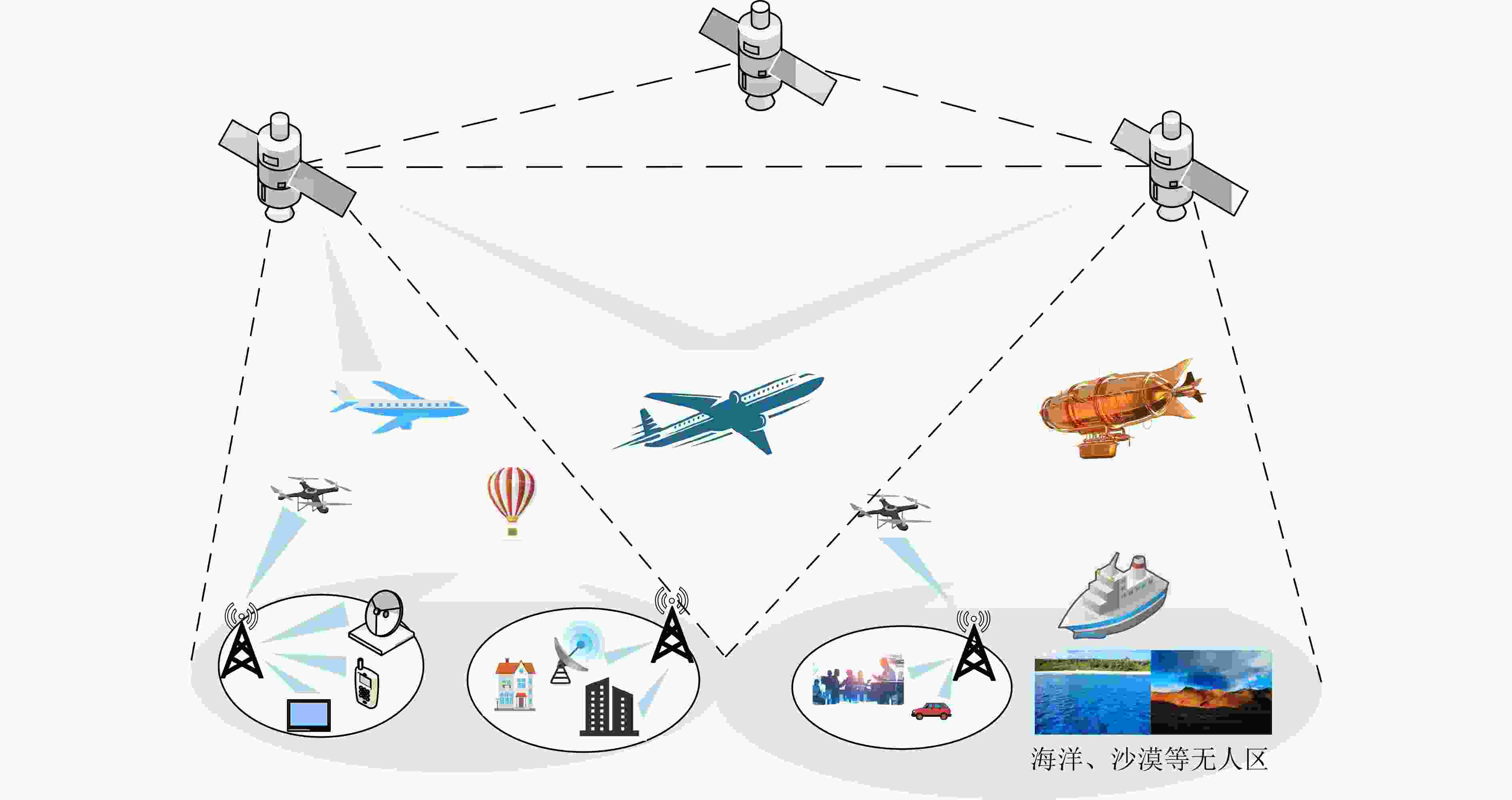
 下载:
下载:
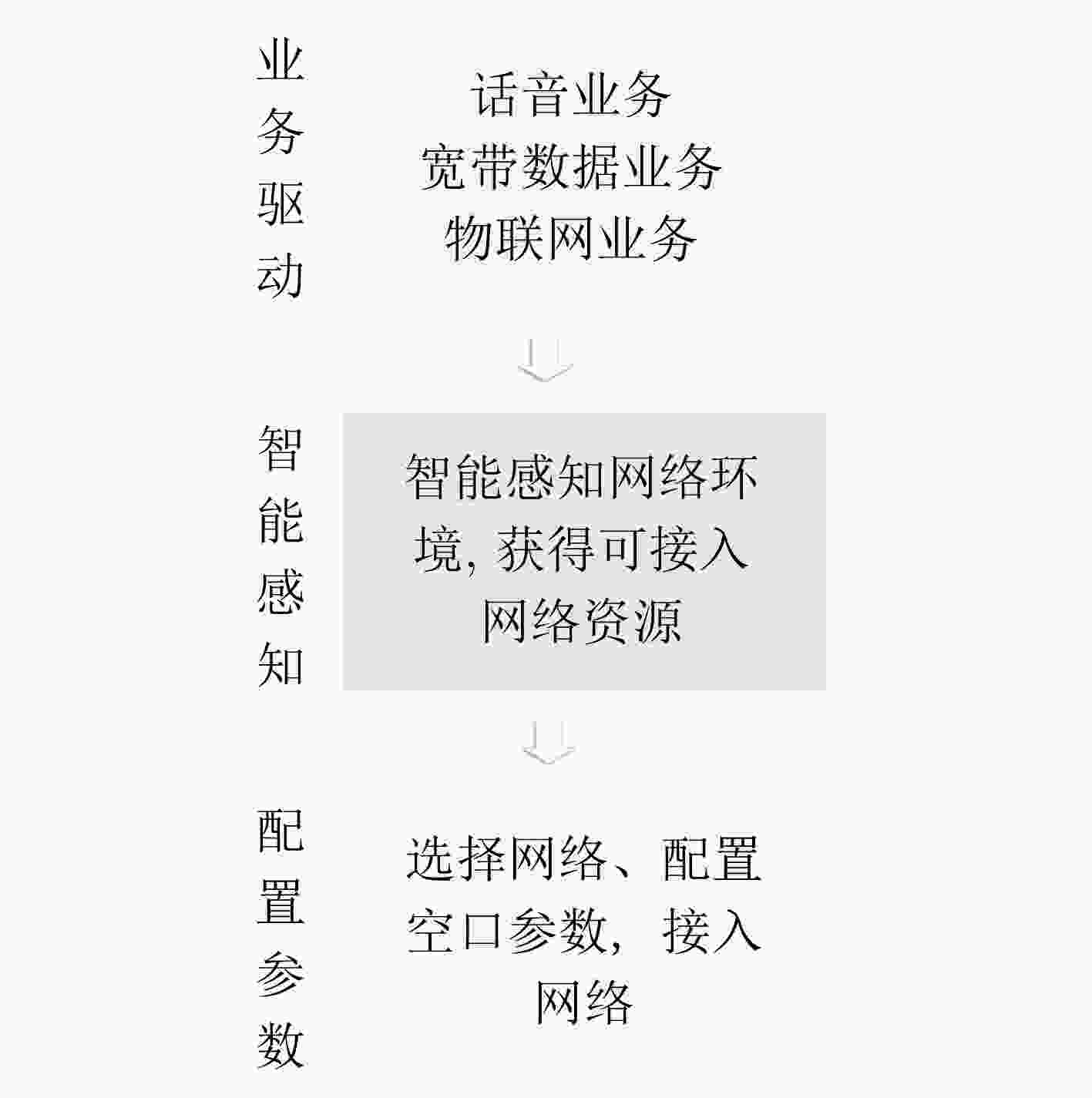
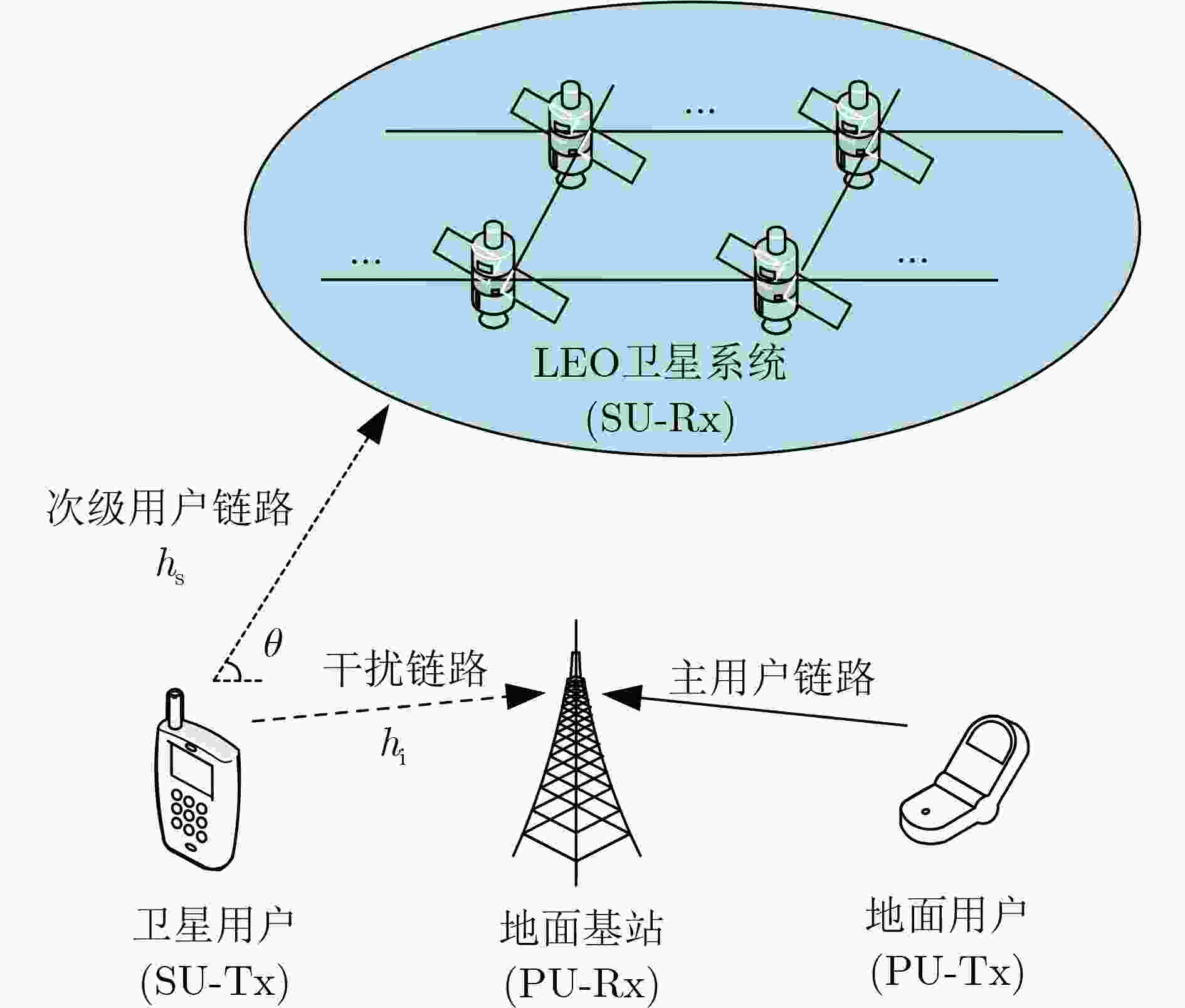
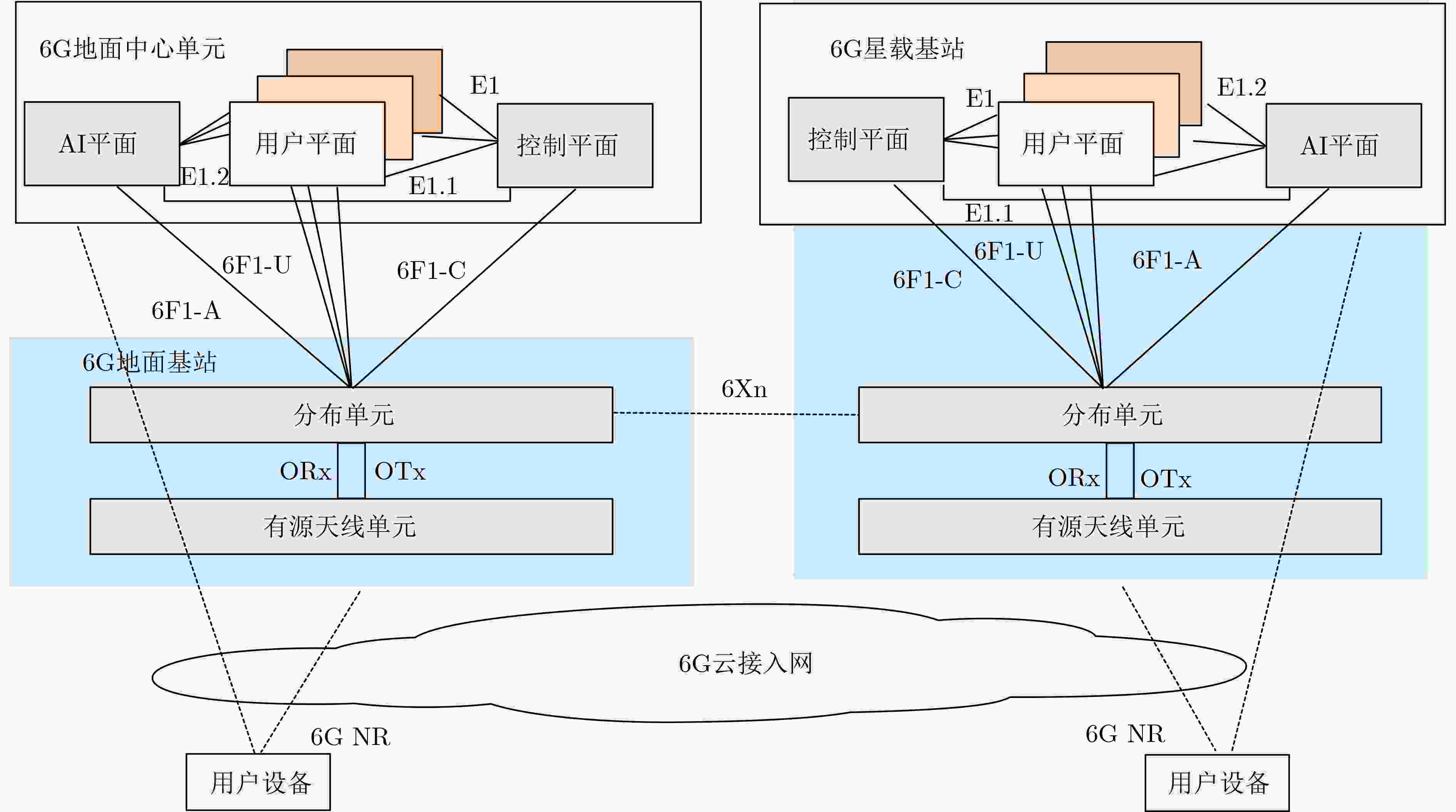
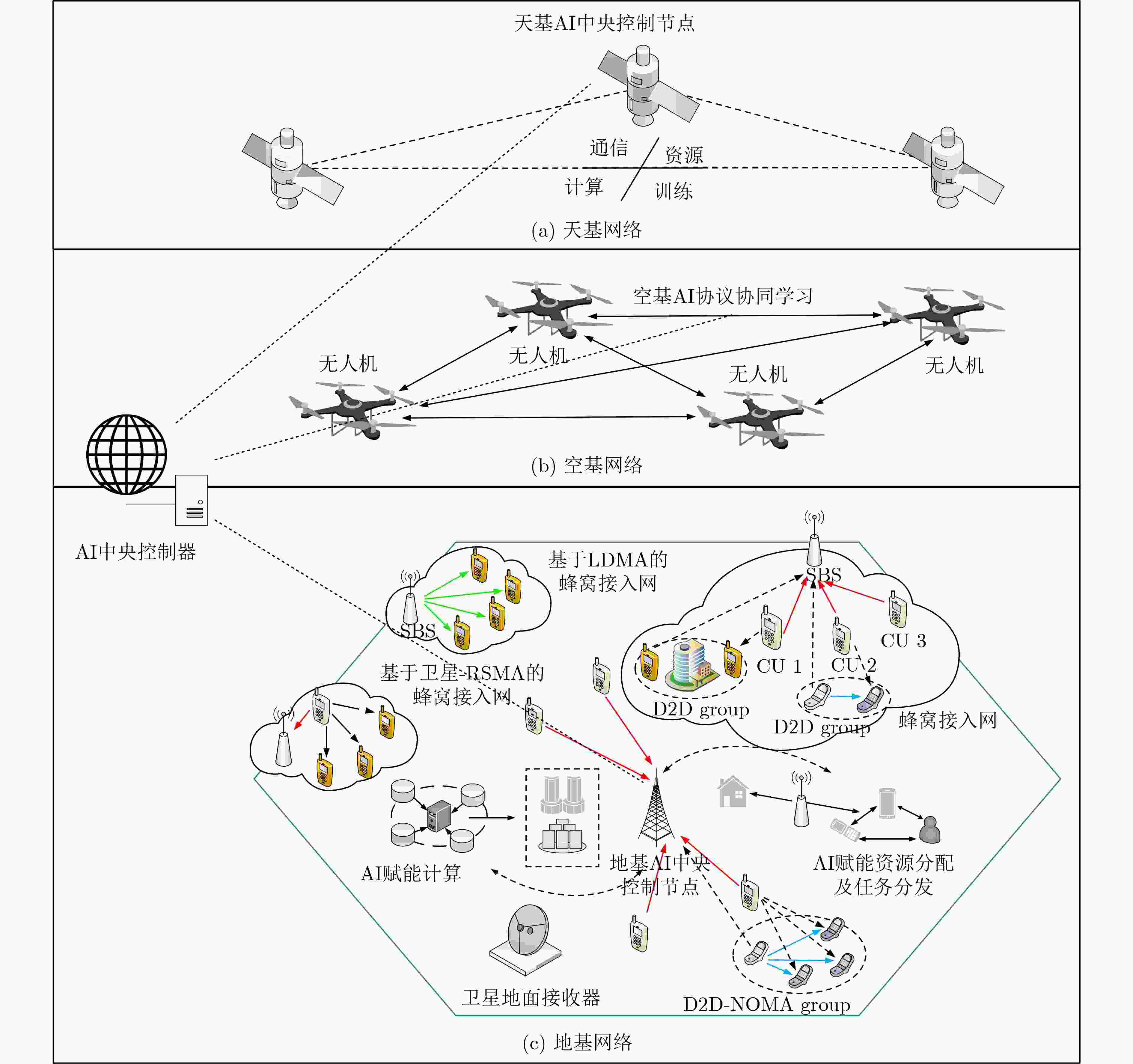
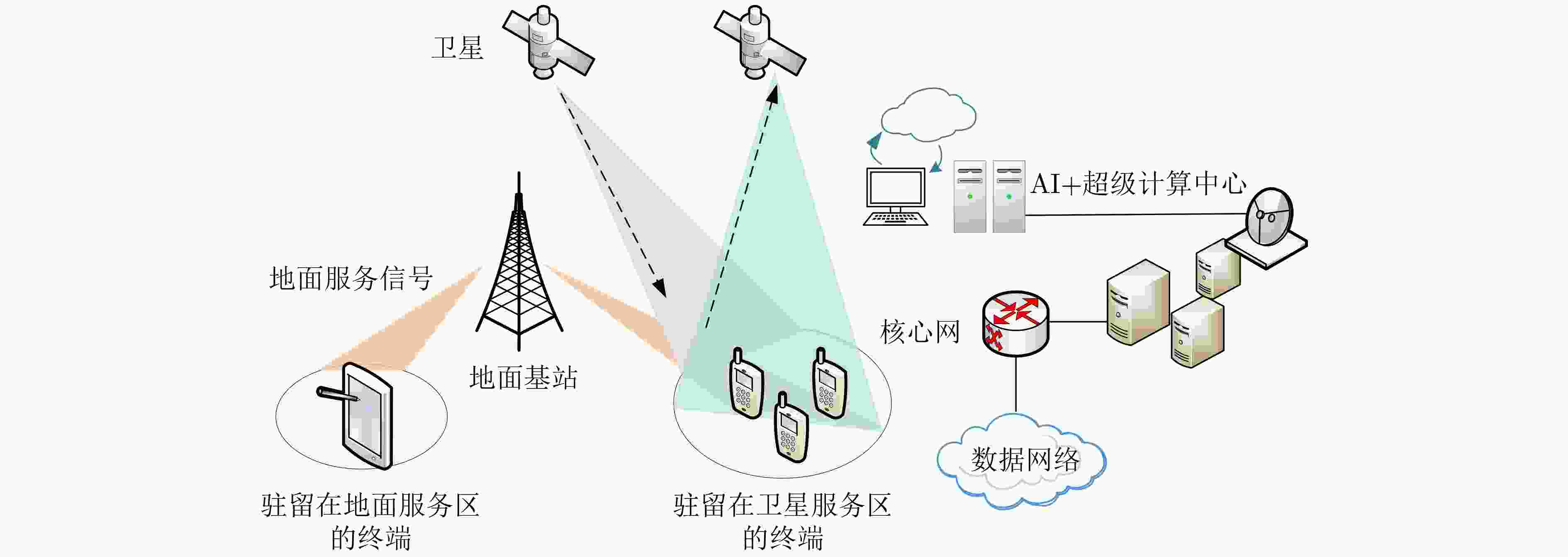


 下载:
下载:
